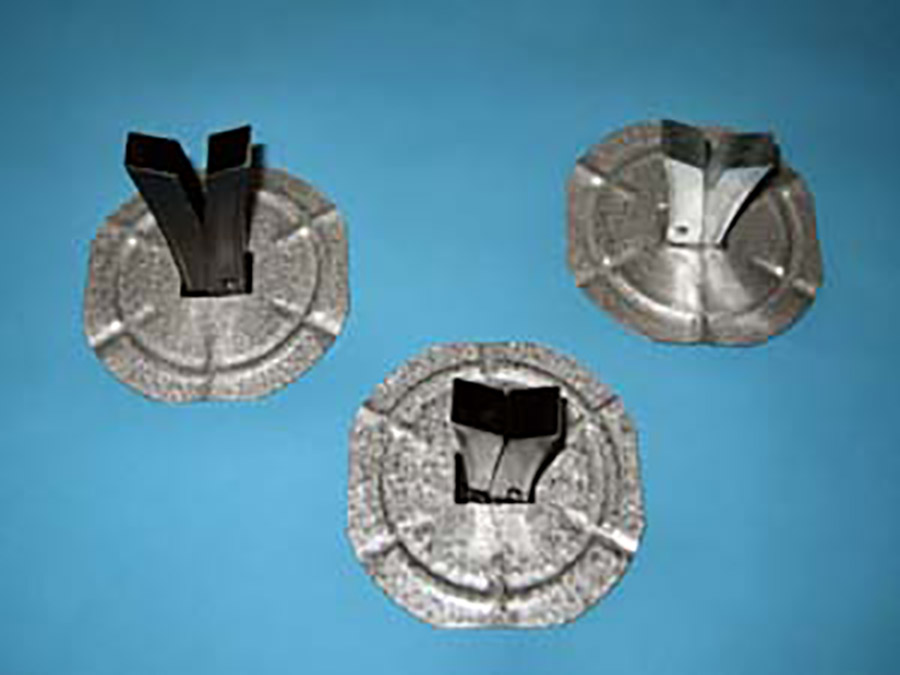These case studies detail the products and processes that Metallon has developed to improve parts and efficiencies, where benefits are passed along to our customers in the form of our quality precision metal stampings.
Brake Adjusting Nut
In February of 1996, a potential customer asked if Metallon could suggest a better, more cost-effective way to produce their powdered metal emergency brake adjusting nut. Working in conjunction with their engineering group, we were successful in developing a stamping that not only exceeded the strength of the powdered metal part, but also reduced the cost by about 50%.
Metallon now manufactures this part in 2 sizes and continues to supply them at a rate of approximately 65,000 units per week.
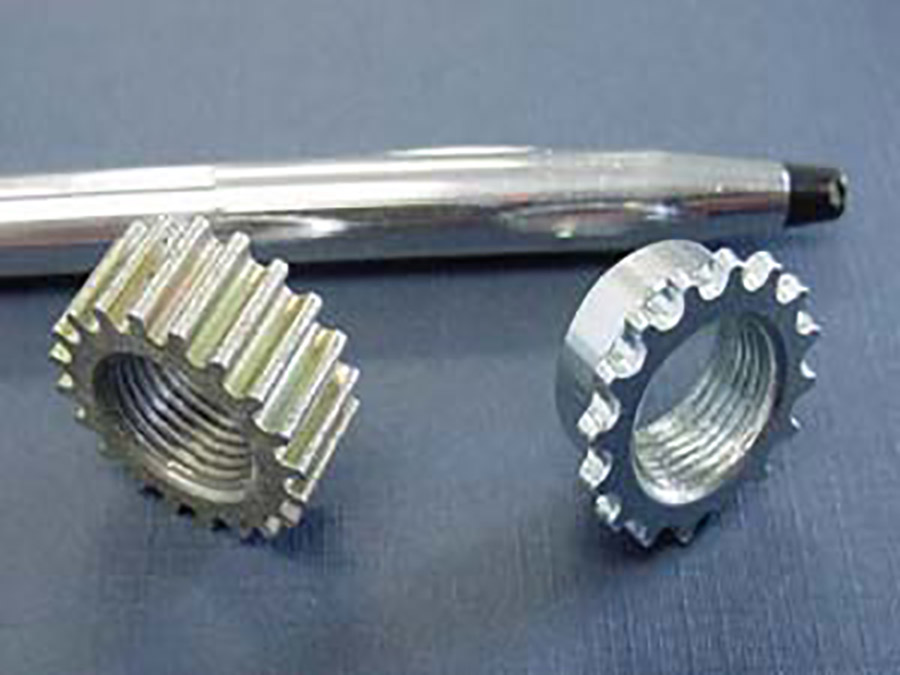
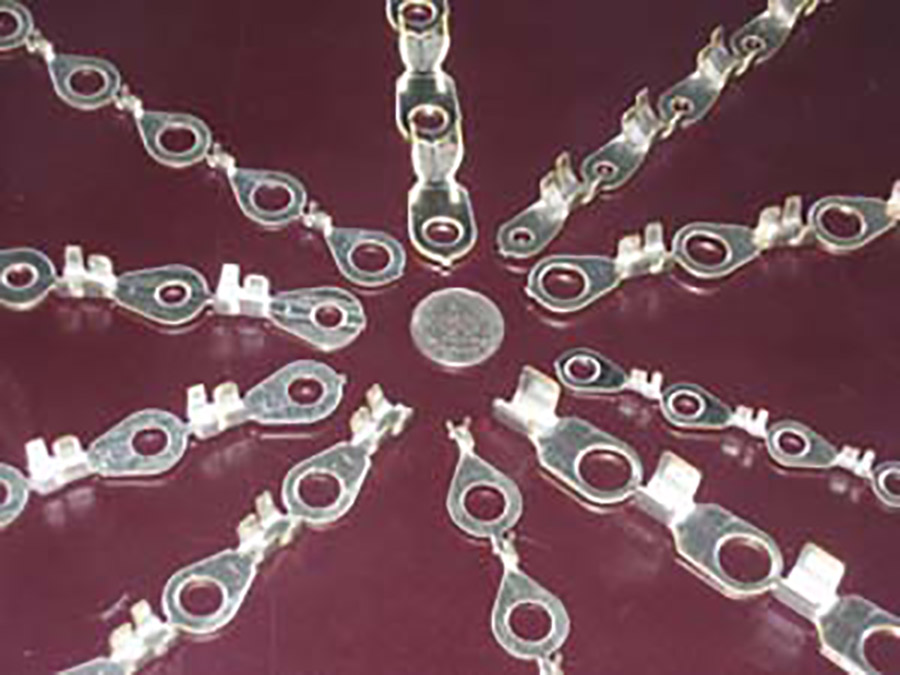
Wire Harness Terminals
In 1997, Metallon was asked by a wire harness supplier if we would quote 6 or 8 ring terminals that the current supplier was going to discontinue. A meeting was set up with the OEM’s engineers and purchasing people. During the meeting, it was mentioned that the OEM had approx. 140 different ring terminals and they wanted them all quoted. During the subsequent review process, it was discovered that there were many overlapping tolerances and the number of parts could significantly be reduced.
Within 6 months, Metallon was producing 31 parts in 7 die sets. This eliminated approximately 109 parts from the OEM’s Bill of Materials, resulting in huge savings for our new customer!
Automated Brake Assembly
Before:
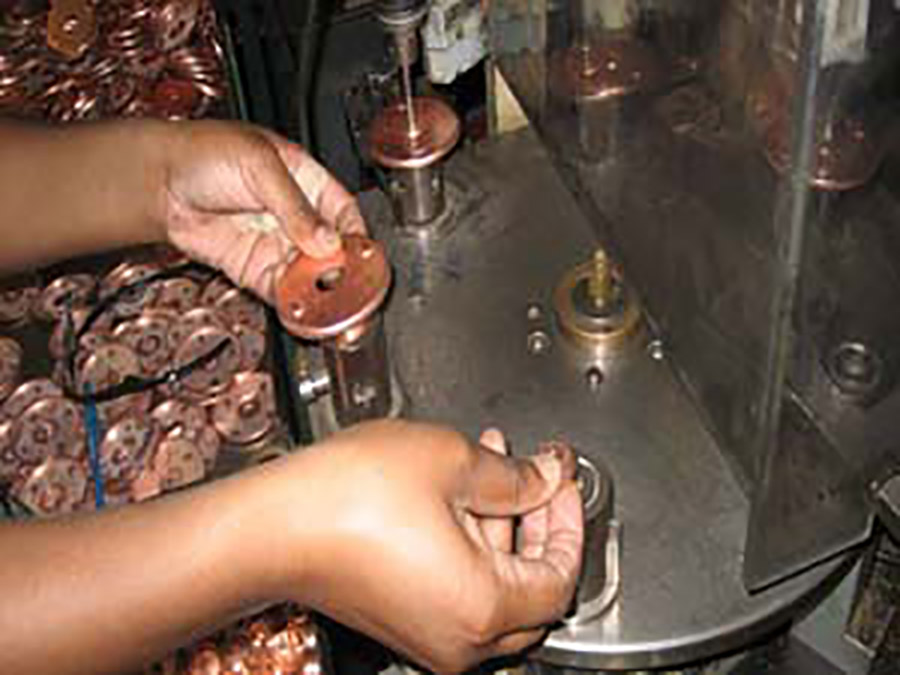
The aircraft brake pad assembly cells originally consisted of one operator inserting a screw machined component into the cup, which was then placed onto a rotary table. It was then orbital riveted together. Batches of these were then moved to a spot welding operator who inserted them into a channel feed to the welding point. This process was interrupted periodically for pull-testing to qualify the strength of the weld.
After:
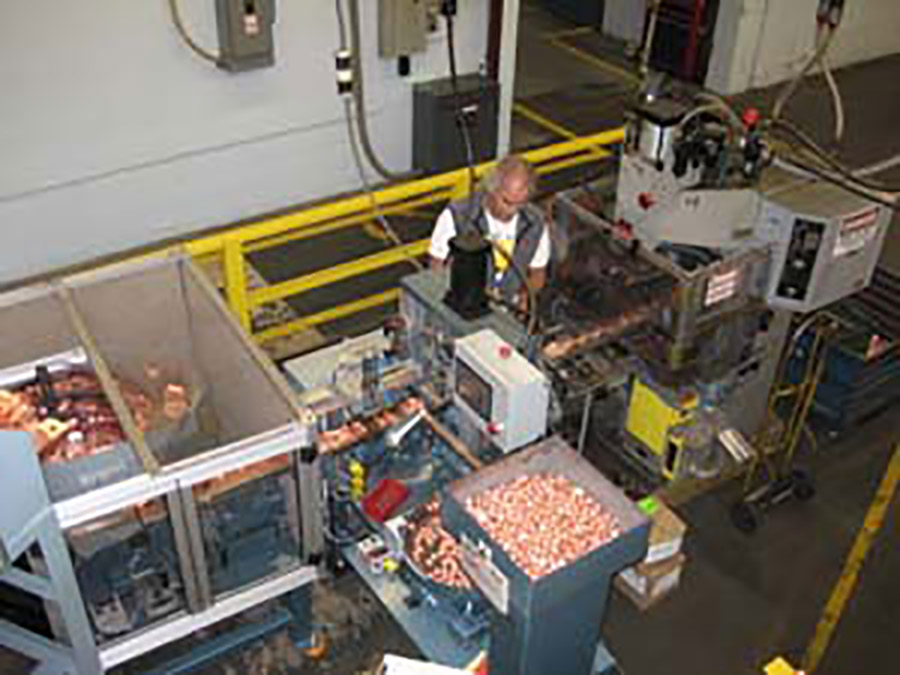
This entire operation is now done continuously: Automatic bowl feeders now pick and place the screw machined part into the cup. It advances to the next station, which orients the part for welding, and then leads to the welding station itself for completion.
Advantages:
- Reduced labor from 4 operators to run 2 assembly set ups down to 1 operator
- Reduced chance of injury or rejected work as a result of human error
- Execute weld testing without interrupting the production line
- Improve regulation of the rate of production, allowing for better planning
Bracket Automation
In the year 2011, Metallon was approached by a customer for their stamping needs. They were in need of stamping of a bracket that is used in the automotive industry. There were two different brackets for a left and right side of the vehicles. This bracket, with all of its bends and flanges also needed to be pierced and tapped after the stamping process. This job was to be put in one of our largest presses out on the floor and soon we realized into the tool building project we would have invest in an even larger 150 ton press. Metallon need the larger tonnage and the larger bed space to make this project happen.
After the high volume stamping process, these parts were brought first to a piercing station where an employee would grab each part one by one and put it into the piercing press. Then once the container has been completed and all of the parts had been pierced. The container would be brought to the next station to have its holes tapped. Finally after the tapping and the piercing process, the parts would go through a final inspection process before being packaged and shipped to our customers.
Metallon decided that it would reinvest capital into building two new automated machines for this job. In 2013, Metallon had built an automation machine that surpassed the efficiency of manual pierce and tapping. The operation was now done in a continuous line by one operator. The auto line now pierced the part in the first station. Then to ensure there was always a pierce hole, it was brought along by the new hole to the next station. This station is where the part is to be tapped. After the bracket has been tapped in the final station, there is a camera that ensures the part has been properly tapped and pierced before being packaged.
Advantages:
- Reduced labor from 2-4 secondary operators down to 1-2 operators.
- Allowed Metallon to showcase its ability to build an efficient automation line.
- Execute the pierce and tap process without the possibility of human error.
- Greatly improved the rate of production of the secondary process, allowing for better planning.
Roofing Fasteners
In 1989, Metallon was asked to develop a sheet metal roofing fastener that could compete with an existing product. The initial result was a 2-piece assembly with one part made in a four-slide machine, the mating part made in a progressive tool, and then both being sent to our customer for assembly.
The marketing efforts were so successful that the next step was to replace the four-slide with progressive tooling. Then, to eliminate the hand assembly at our customer’s facility, we developed a transfer mechanism to stamp and assemble in one press; currently, we have 5 press cells set up. In 2005, we drop-shipped 93,000,000 assemblies.
